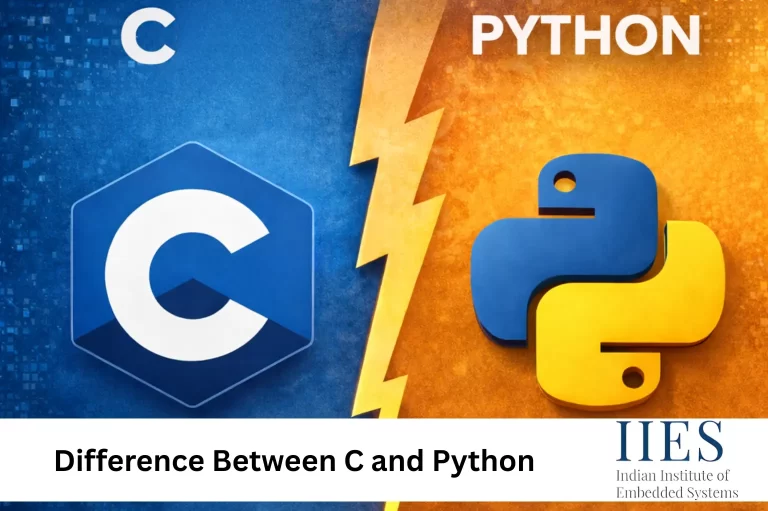
C and Python are two widely used general-purpose programming languages, each designed with different goals and use cases in mind. Understanding the Difference Between C and Python helps developers choose the right tool based on performance requirements, development speed, and application domain. While C focuses on low-level system access and high performance, Python emphasizes simplicity, readability, and rapid development.
This article explores the Difference Between C and Python across multiple dimensions, including history, language design, syntax, memory management, performance, security, and real-world usage.
The Difference Between C and Python lies mainly in control versus convenience. C provides low-level access, high execution speed, and manual memory management, making it ideal for embedded and system-level programming. Python prioritizes developer productivity with readable syntax, automatic memory handling, and extensive libraries for modern applications. The choice depends on performance needs and development goals.
C is a procedural programming language that provides direct access to memory and hardware resources. It is widely used in system-level programming where performance and efficiency are critical, clearly demonstrating the low-level difference between C and Python.
Python, on the other hand, is a high-level programming language designed for ease of use and rapid development. It abstracts low-level details and offers extensive libraries for diverse applications.
In simple terms, C focuses on control and performance, while Python emphasizes productivity and simplicity—highlighting a fundamental difference between C and Python.
C was developed by Dennis Ritchie in 1972 for system programming. It became one of the most influential programming languages and serves as the foundation for languages like C++, Java, and C#.
Python Programming Language
Python was created by Guido van Rossum in 1991 as a high-level, general-purpose language. It was designed for readability and simplicity, clearly showing the usability difference between C and Python.
C and Python differ significantly in how programs are written and executed, forming a core difference between C and Python.
C has a steeper learning curve due to pointers, manual memory management, and strict syntax rules. Developers often need a strong understanding of computer architecture.
Python is beginner-friendly, offering clean syntax, readable code, and automatic memory management. This ease of learning highlights another important difference between C and Python.
While Python enables faster development, C provides deeper system-level control.
Memory handling is one of the most critical areas that shows the difference between C and Python.
malloc() and free().
C offers maximum control and efficiency, while Python reduces complexity and memory-related errors.
C relies on return values and manual checks for error handling, which can make debugging complex.
Python provides structured exception handling using try, except, and finally blocks, improving readability and maintainability.
C does not support object-oriented programming natively. Inheritance and polymorphism must be manually implemented using structures and function pointers.
Python fully supports object-oriented programming with built-in inheritance and Method Resolution Order (MRO), making it suitable for large-scale applications.
This portability is another practical difference between C and Python.
C is more vulnerable to issues like buffer overflows and memory leaks due to direct memory access.
Python provides safer defaults through runtime checks and automatic memory management, reducing common security risks.
C is often used for performance-critical components that integrate with higher-level languages.
Python can interface with C through extensions, combining Python’s simplicity with C’s performance.
C is faster because it is a compiled language that executes directly on hardware with manual memory control. Python is interpreted and has runtime overhead, which reduces execution speed.
The best Python course in Bangalore for beginners at IIES offers structured learning, hands-on projects, and industry-relevant training. It helps learners quickly build practical Python skills for real-world applications.
C should be used for performance-critical, hardware-level, and real-time applications. Python is better suited for rapid development and high-level programming tasks.
.
Indian Institute of Embedded Systems – IIES